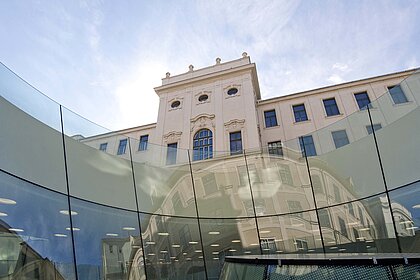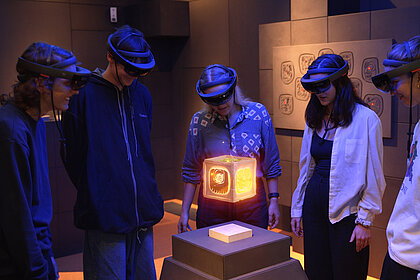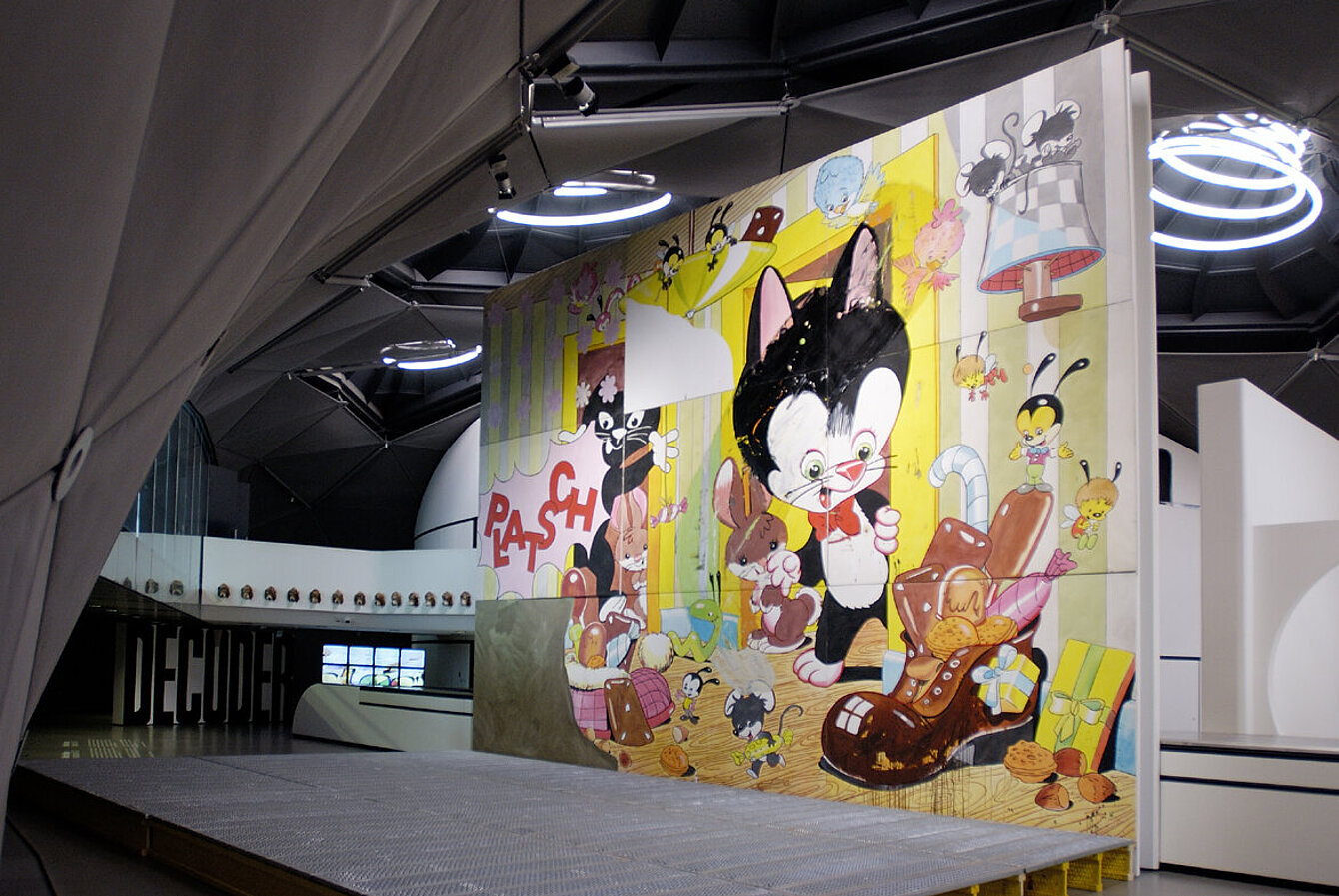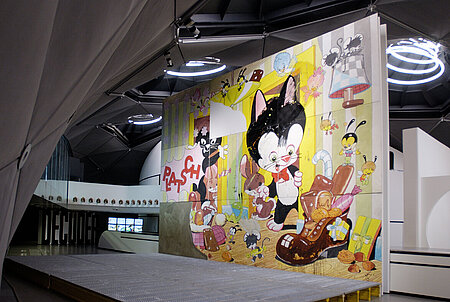The artist not only followed the spirit of the 1990s, which was characterised by the digitalisation of culture, by techno and ecstasy but helped define it. What evolved from this was a mix of visual codes of high and low art, where Majerus made use of the medium of painting in a pronounced way. Ultimately, his spacious installations illustrated the productivity of a medium—painting.
The Kunsthaus Graz with its advanced architectural structure is an ideal setting for presenting Michel Majerus’ central space-oriented works.
Michel Majerus never competed against painting. He rather added it to his palette of creative forms of expression in order to redefine the phenomenon of space with its help. His development as an artist ranged from the canvas as “arena” in Jackson Pollock’s works, via Barnett Newman’s color spaces to the transference of painting into the domain of object art in Pop Art; and eventually it led him into the virtuality of the gaming culture. Playing computer games or console games Majerus recognized the contemporary extensibility of artistic production and reception as well as the revitalization of the art-historical repertory (Minimal Art, Pop Art, etc.). Using the technique of sampling, techno was the first ecstatic digital movement in music. All sounds you could imagine were digitally sampled and mixed. Michel Majerus transferred this practice into the realm of the visual. The juxtaposition and layering of various heterogeneous quotes—from Rubens to Disney—generated a pluralism characteristic for his early works. The strong associative relation to the gaming culture—Majerus used to love playing Super Mario—made the spaces he created more and more dynamic, transparent and ephemeral, thus adding extreme topicality to his painting. He did not accept the much-lamented death of painting. On the contrary, he tried to give proof to the vitality and leading function of this medium. Majerus negated the traditional concept of the artist, which is characterized by subjectivity, originality and authenticity. He rather acted as an organizer of the visual, as a director.
In his late works Michel Majerus mostly did without direct quotes. There was only an associative nexus in his allusions to Pop Art. In that period the artist was more interested in exploring phenomena of perception. For instance, he blocked the view at the paintings with certain architectural elements but, in doing so, he offered fresh visual alternatives.
With its structure differing so much from the White Cube, the Kunsthaus Graz is an ideal place for presenting Michel Majerus’ installations appropriately. Four central exhibitions of the artist have been reconstructed for this show and some others have been integrated into the exhibition as quotes. Simultaneity and the intertwining of the different parts of the exhibition make it possible for the visitors to navigate through the so short productive time of Michel Majerus.




















